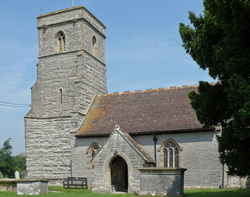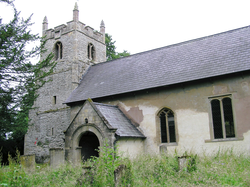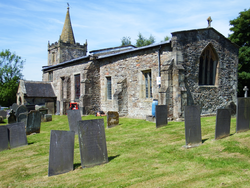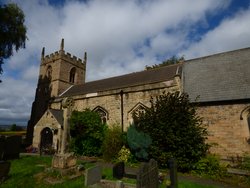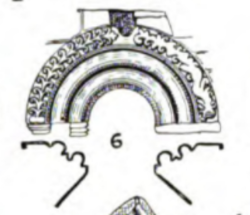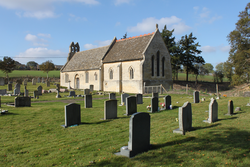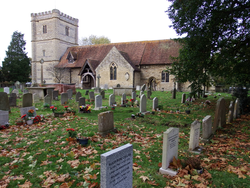
The Corpus of ROMANESQUE SCULPTURE in Britain & Ireland

Parish church
The tiny hamlet of Lovington (Lufa’s tun) lies 1km S of the Somerset river Brue and only about 500m N of the Cary, on the SW edge of a terrace deposit of gravel on top of the locally predominant Lower Lias rock, with extensive tracts of such terrace deposit to the NE. The church is about 0.5 mi S of the secondary B3153 road linking Castle Cary to Somerton. The church has 13thc origins. The tower, nave and porch were all rebuilt from 1861-3. There is a font of unknown date, most probably post-c.1200, but which is included here for reference.
Parish church
Winkburn is a village in the Newark and Sherwood district of the county, 6 miles NW of Newark. The church is of dressed coursed rubble, rendered except for the tower. It consists of chancel, nave, S porch and W tower. The doorway in the S porch, the openings in the tower and the tower arch are Romanesque. The fabric of the church appears to be largely 11th/12thc.. An inscription on the tower tells of a restoration in 1632. There was a further restoration in 1996.
Parish church, formerly chapel
Kniveton is a village in the Derbyshire Dales district of the county, 3 miles NE of Ashbourne. The church is in the village centre and has an aisleless nave with a W gallery and a S porch, a W tower with a spire and a chancel with a N vestry. The nave and S doorway are 12thc work. The W tower is late 13thc with battlements and tower added in the 15th-16thc. Both nave and chancel were rebuilt with new windows in 1663. Construction is of coursed gritstone rubble with ashlar dressings.
Parish church
Killamarsh is a town in the NE Derbyshire district of the county, 8 miles NE of Chesterfield but for practical purposes on the SE outskirts of Sheffield. The church is on the N edge of the town and consists of nave, chancel, south porch and embattled tower. The N aisle and vestry were added in 1895 by J M Brooks, but there was an earlier 19thc restoration in which the chancel was rebuilt. The only Romanesque feature remaining in the church is the S nave doorway.
Oratory (ruin)
A small oratory, 23'7" x 15'7" (7.18 m x 4.75 m) (Westropp); ruined and ivy-covered, but with walls and gables standing to full height. The W doorway is damaged but enough of the bases and inside L jamb survive to indicate an arched opening. There are no carved or moulded stones on the jambs or arch apart from some ashlar springers on the interior R. Of rubble masonry apart from the ashlar E window.
Parish church
Essendine is a village in Eastern Rutland, located 5 mi N of Stamford. This charming little church dedicated to St Mary sits isolated on the edge of the village. It is situated within a larger medieval site that once included a castle surrounded by a moat, fed by the West Glen River just to the east of the property. St. Mary’s is basically a two-cell 12th c. church which was remodeled in the 13th c. It consists of a chancel slightly higher than the nave and a well-preserved 13th c. double-bellcote on the W end of the nave, a common feature on Rutland churches. Extent Romanesque fabric includes the stunning S doorway, the simpler N doorway and components of the chancel arch, although it has evidently been rebuilt.
Parish church
Warborough is a village in the district of South Oxfordshire, 2.5 miles N of Wallingford and 9 miles S of Oxford. The church stands in the centre of the villageand has a long nave and chancel in one with a S porch to the nave and a transeptal chapel alongside it that also contains a small organ. There is another organ room and a vestry on the N side of the chancel, The chancel has no chancel arch, only a screen. At the W end is a tower. Construction is of clunch rubble and flint with limestone dressings and flushwork on the tower. Nave and chancel are 13thc in origin. The transept is 14thc and the tower dates from 1666. The chancel was restored by Bodley and Garner in 1881. The only Romanesque feature is the lead font.
